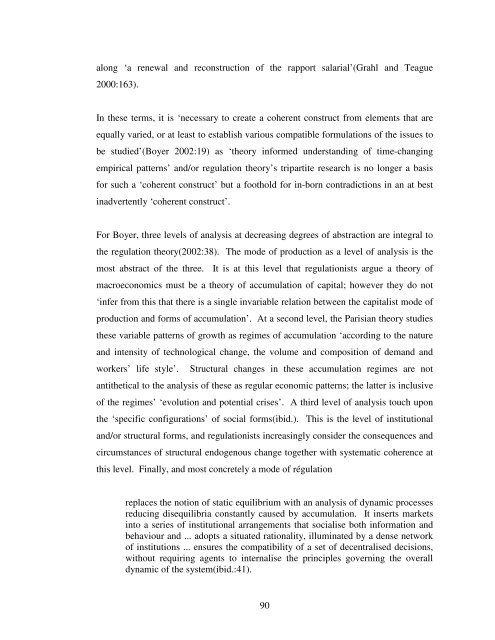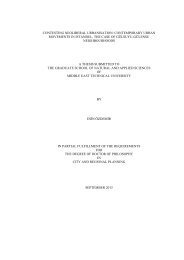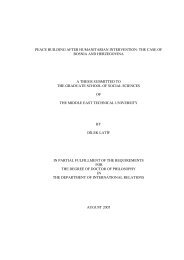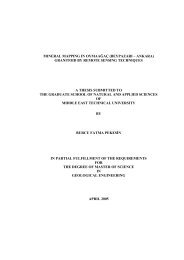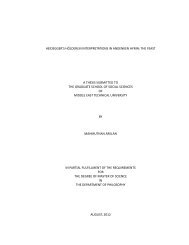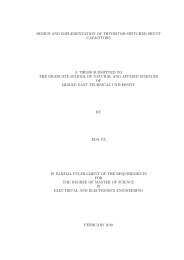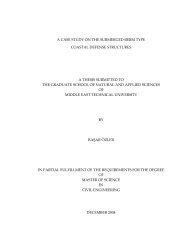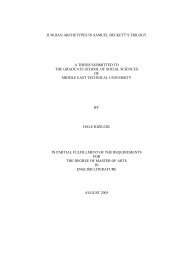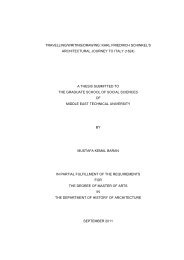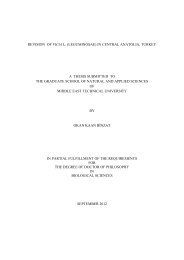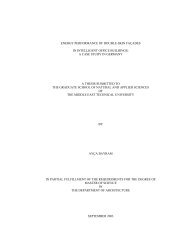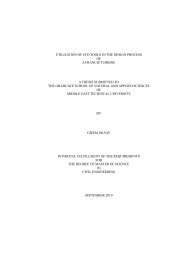View Original - Middle East Technical University
View Original - Middle East Technical University
View Original - Middle East Technical University
Create successful ePaper yourself
Turn your PDF publications into a flip-book with our unique Google optimized e-Paper software.
along ‘a renewal and reconstruction of the rapport salarial’(Grahl and Teague<br />
2000:163).<br />
In these terms, it is ‘necessary to create a coherent construct from elements that are<br />
equally varied, or at least to establish various compatible formulations of the issues to<br />
be studied’(Boyer 2002:19) as ‘theory informed understanding of time-changing<br />
empirical patterns’ and/or regulation theory’s tripartite research is no longer a basis<br />
for such a ‘coherent construct’ but a foothold for in-born contradictions in an at best<br />
inadvertently ‘coherent construct’.<br />
For Boyer, three levels of analysis at decreasing degrees of abstraction are integral to<br />
the regulation theory(2002:38). The mode of production as a level of analysis is the<br />
most abstract of the three. It is at this level that regulationists argue a theory of<br />
macroeconomics must be a theory of accumulation of capital; however they do not<br />
‘infer from this that there is a single invariable relation between the capitalist mode of<br />
production and forms of accumulation’. At a second level, the Parisian theory studies<br />
these variable patterns of growth as regimes of accumulation ‘according to the nature<br />
and intensity of technological change, the volume and composition of demand and<br />
workers’ life style’. Structural changes in these accumulation regimes are not<br />
antithetical to the analysis of these as regular economic patterns; the latter is inclusive<br />
of the regimes’ ‘evolution and potential crises’. A third level of analysis touch upon<br />
the ‘specific configurations’ of social forms(ibid.). This is the level of institutional<br />
and/or structural forms, and regulationists increasingly consider the consequences and<br />
circumstances of structural endogenous change together with systematic coherence at<br />
this level. Finally, and most concretely a mode of régulation<br />
replaces the notion of static equilibrium with an analysis of dynamic processes<br />
reducing disequilibria constantly caused by accumulation. It inserts markets<br />
into a series of institutional arrangements that socialise both information and<br />
behaviour and ... adopts a situated rationality, illuminated by a dense network<br />
of institutions ... ensures the compatibility of a set of decentralised decisions,<br />
without requiring agents to internalise the principles governing the overall<br />
dynamic of the system(ibid.:41).<br />
90


